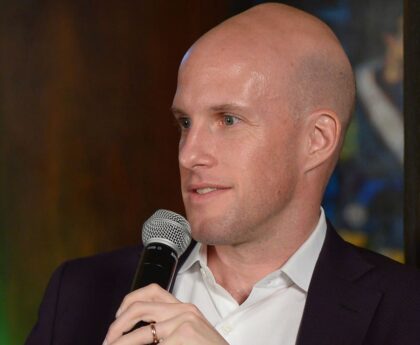Less than half of U.S. nurses say they are “fully engaged” while on the job — and about 14% say they are “unengaged.”
This is according to the 2023 National Nursing Engagement Report from the Nebraska market research and consulting company PRC. It surveyed 1,923 RNs from 37 hospitals across the country.
The survey posed 34 questions to nurses about “nurse quality indicators,” engagement, burnout and retention.
BURNT OUT AND GETTING OUT: AMERICAN HOSPITALS STRUGGLE WITH INCREASING SHORTAGE OF NURSES
The results, released earlier this month, showed that for the nurse quality indicators, the nurses assessed the following:
Fully engaged nurses are defined as being “emotionally and intellectually connected to their hospitals” and invested in their success, according to PRC.
They “positively influence patient care,” have fewer absences from work and actively volunteer to mentor other nurses and advocate for their hospital, the report said.
Engaged nurses “play it safe” on the job, according to the study.
WHY DOCTORS IN TRAINING ARE TAKING ‘CULINARY MEDICINE’ A LOT MORE SERIOUSLY
Unengaged nurses are the ones “who look for a shift to end, are focused on the next break, who call off during times of stress, and for whom a patient is a diagnosis or a task,” the report stated.
The report’s findings highlight the need to provide nurses with more opportunities for staff development, engagement with leadership and autonomous nursing practice, according to Candice Whealon, an advanced practice registered nurse and assistant clinical professor at the Sue and Bill Gross School of Nursing in Irvine, California.
Whealon was not involved in the study.
“Nurses typically work in fast-paced, high-stress environments,” Whealon told Fox News Digital.
“To increase engagement, they must be given time and opportunities to participate in decision-making.”
She added, “Health care organizations must also support nurses’ professional development, so they are prepared to discuss the realities of their work environment with key stakeholders and advocate for their unique departmental needs.”
Among various age groups, millennial nurses had the highest rates of unengaged nurses (17.1%) compared to Generation X (14%) and baby boomers (10.5%), according to PRC’s report.
Rhonda Collins, a registered nurse and chief clinical officer at Artisight, Inc., a Chicago medical technology company, noted that the highest rate of nurse turnover is among nurses with less than two years of experience.
“Many of these nurses were in nursing school when the pandemic hit and were deprived of the opportunity to actually train by caring for patients in the hospital,” said Collins, who was not part of the PRC research.
“Thousands of nurses graduated during COVID or just after COVID, passed their state board exams and went to work in hospitals having never touched a patient in clinical practice,” she added.
NURSING ‘BURNOUT’: NURSES WORRY SHORTAGE WILL WORSEN IF MEASURES AREN’T TAKEN
“The numbers of disengaged nurses in millennials could well be reflected in this phenomenon.”
Timing of shifts was also a factor, the study found.
The night shift had more unengaged nurses at 18.4%, compared to 12.8% of day shift nurses.
TYPE 2 DIABETES A MUCH GREATER RISK FOR ‘NIGHT OWLS’ THAN EARLY BIRDS, A ‘STARTLING’ NEW STUDY FINDS
“This is not surprising — the night shift is extremely taxing both physically and mentally,” Whealon said.
“Staffing shortages tend to take the greatest toll on staff working overnight, when administrative support is limited.”
Emergency departments had the highest rate of unengaged nurses at 18%, followed by inpatient settings (14.7%) and other settings (14.3%), the report stated.
As an emergency department nurse practitioner at a level one trauma center, Whealon attested to the unique challenges nurses face in EDs, which are often overcrowded and lacking in resources.
“This results in prolonged wait times for treatment, contributing to patient dissatisfaction and ultimately nursing frustration and compassion fatigue,” she said.
Even so, unengaged nurses aren’t always looking to jump ship, the report stated.
Overall, 82% of nurses plan to remain at their organizations for the next two years — and 50% of unengaged nurses plan to stay.
“It is interesting that so many intend to stay despite being unengaged by current measures,” Whealon reacted. “There is clearly a need for more research to better understand this population, as the nurse’s role is unique.”
“Nurses are trained patient advocates with a diverse and highly valuable set of skills that leave many feeling a duty to serve greater than a desire to pursue a different profession.”
Collins emphasized the dire need for solutions amid a growing demand for qualified nurses.
NATIONAL NURSING SHORTAGE HITTING RURAL AMERICA HARDEST
“The U.S. Bureau of Labor Statistics projects 194,500 average annual openings for registered nurses through 2030, with employment projected to grow 9%,” she pointed out.
Elaina McAdams Hall, a registered nurse and chief quality officer of SnapNurse, a health care staffing firm based in Atlanta, Georgia, was not involved in the PRC report but offered four strategies to combat dwindling engagement and burnout in the nursing workforce.
1. Invest in education and training
“Reskilling and upskilling clinical education programs attract and retain current nurses and individuals interested in nursing,” Hall told Fox News Digital.
“Start with an assessment of your current nursing staff and provide reskilling and upskilling opportunities within your own organization.”
2. Improve work-life balance
Some ideas to boost nurses’ work-life balance include offering flexible scheduling, reasonable shift lengths and adequate time off to prevent burnout, Hall said.
“Challenge the traditional mentorship model by implementing reverse mentoring programs,” she suggested. “Younger, tech-savvy nurses can mentor senior nurses on using technology and time-management tools to optimize their work-life balance.”
3. Enhance compensation and benefits
Offer competitive salaries and benefits packages, Hall recommended, to attract and retain nursing talent.
“Challenge the conventional approach of salary negotiation by adopting fixed and fair compensation models,” she suggested.
Recognizing and rewarding experience and expertise with performance-based incentives is also key, Hall said.
4. Create a supportive work environment
“Foster a culture of appreciation, respect and support within health care organizations,” Hall advised.
CLICK HERE TO SIGN UP FOR OUR HEALTH NEWSLETTER
“Encourage open communication, provide access to mental health resources, and involve nurses in decision-making processes.”
She also emphasized the need to offer opportunities for specialization, leadership roles and ongoing professional development to keep nurses engaged and motivated.
“Addressing the nursing workforce shortage requires a multifaceted approach that combines these strategies with ongoing research and advocacy for the nursing profession at the local and national level,” Hall urged.
For more Health articles, visit www.foxnews.com/health.
Article Source: Health From Fox News Read More




